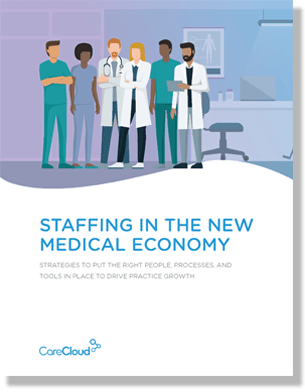Medicare pays for medically necessary services for most individuals’ age 65 and older. Medicare may also cover those that have received disability benefits from the social security administration, or the railroad board. Traditional Medicare consists of several parts which combine coverage for hospital stays and medical services. Part A covers hospital care, care in a skilled nursing facility, or home health and hospice care services. Part B covers medical services and equipment. Usually, Medicare Part D, which covers prescription drugs, is part of traditional Medicare benefits.
Medicare Advantage plans, which are sometimes referred to as Medicare Part C or MA Plans, offer options that are not covered under the traditional Medicare plan. Private insurance companies that are approved and paid a fixed monthly amount by the Centers from Medicaid and Medicare Services (CMS) offer Medicare Advantage plans. Medicare Advantage doesn’t replace Medicare Part A and B but offers a way to receive additional benefits.
Types of Medicare Advantage Plans
Traditional Medicare generally permits receiving care from any doctor, provider, or hospital as long as they accept the terms of Medicare. Medicare Advantage plans are structured like a Health Maintenance Organization (HMO), or a Preferred Provider Organization (PPO). Each Medicare Advantage plan may have different benefits, rules, and restrictions on what coverage is provided for physicians and healthcare providers.
In addition to the necessary Medicare Part B premium, each Medicare Advantage plan may have an additional cost. Costs from deductibles, copays and coinsurance for more costly services such as chemotherapy, radiation, and durable medical equipment can also vary. Different types of Medicare Advantage Plans include:
Health Maintenance Organization (HMO)
- The primary care physician (PCP) acts as the care coordinator
- A patient can only see providers within the network
- Usually requires a referral from the PCP to see a specialist
- Has increased costs for care outside of network
Preferred Provider Organization (PPO)
- Reduced costs for use of healthcare providers in the plan network,
- Most do not require a PCP referral to see a specialist
- Increased cost for care outside of network
Private Fee For Service Plan (PFFS)
- A patient may go to any provider as long as they accept Medicare
- Division of payment between the plan and individual can vary
Special Needs Plans (SNPs)
- Focused and specialized healthcare for specific groups that:
- Have both Medicare and Medicaid
- Live in a nursing home
- Have certain chronic health conditions
HMO Point-of-Service Plan (HMOPOS)
- May allow service out of network for a higher copayment or coinsurance
Medical Savings Account (MSA)
- A high deductible health plan
- Deposits money for care
- Requires Medicare Part D for prescription coverage
Medicare, Medicare Advantage, or Medigap
Medicare Advantage plans usually have lower premiums, while traditional Medicare has more predictable costs. Medigap is considered Medicare Supplement Insurance. Like Medicare Advantage, Medigap is in addition to traditional Medicare, and the provider must accept Medicare terms, but Medigap and Medicare Advantage can’t be combined.
Medicare Advantage provides the same coverage that Medicare does but the advantage is that it offers a way to potentially receive additional benefits for prescription drug coverage, wellness, and supplemental benefits like adult day care, dental, hearing, and vision. Other benefits over Medicare include lower out-of-pocket costs and capped annual out-of-pocket costs. Although Medicare Advantage plans often require the use of providers within-network to receive the lowest cost for healthcare service. The provider must also participate in Medicare Advantage.
Choosing a Plan
Medigap usually has a higher monthly premium, but often has lower out-of-pocket expenses than Medicare Advantage. Medicare and Medigap also are not restricted to a certain region or specific providers like Medicare Advantage. A few things to consider in determining the best plan include:
- Medigap and Medicare don’t restrict care to certain regions or within the network so consider the frequency of travel out-of-network and the potential need for care
- Evaluate usual health care costs to determine if Medigap might be better for reduced costs
- Medicare Advantage offers additional services with less cost
- Some chronic conditions may limit available choices
The benefits and costs of each plan can change each year so it’s important to reevaluate if the current plan is the best choice. Most plans have an annual open enrollment from October 15th through December 7th that offers an opportunity to return to original Medicare, but returning to, or choosing Medigap, may require approval.
Additional assistance and information about Medicare for each state can be reviewed at State Health Insurance Assistance Programs (SHIPs), or on the National Council on Aging’s Medicare Matters website, which offers comparison tools.
Evaluating Healthcare Options
There are various plans for healthcare coverage under Medicare and Medicare Advantage. Medicare Advantage plans can offer additional choices to traditional Medicare at a lower cost, but personal health, preferred providers, cost and the amount of out-of-network travel should be taken into consideration.
DUMMYTEXT
Sources:
- Medigap Vs. Medicare Advantage: Which is Better?
- The Hidden Costs in Medicare Advantage Plans
- Who Qualifies for Medicare Advantage Plans?
- Understanding Medicare Advantage: HMO and PPO Plans
Bio:
Maureen Bonatch MSN, BSN, RN draws from years of experience in nursing administration, leadership, and psychiatric nursing to write healthcare content. Her work has appeared in numerous health system websites and healthcare journals. Her experience as a fiction author helps her craft engaging and creative content. Learn more about her freelance writing at CharmedType.com and her fiction books at MaureenBonatch.com




